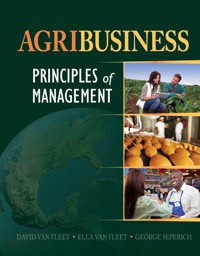Food retailing is an extremely competitive environment. In the United States, along with Kroger and Walmart there
Question:
Food retailing is an extremely competitive environment. In the United States, along with Kroger and Walmart there are competitors from France (Carrefour), Netherlands (Ahold), United Kingdom (Tesco), Japan (7-11), and Canada (Alimentation Couche-Tard). Each is competing fiercely for every food-retailing dollar, each trying to identify a profitable niche to exploit. CEO Craig Herkert, Supervalue Inc., observed that the supermarket sales environment is “extraordinarily competitive,” as he commented on the activity of an international competitor in the United States, Koninklijke Ahold NV.
Perhaps the most “interesting” competitor in the food-retailing industry is Trader Joe’s with 367 stores in 2012. In the words of Fortune magazine, “It’s an off beat, fun discovery zone that elevates food shopping from a chore to a cultural experience. It stocks its shelves with a winning combination of low-cost, yuppie-friendly staples . . . and exotic aff ordable luxuries . . . . Its niche is to appear to be your friendly neighborhood store with the buying power of a grocery chain.
Trader Joe’s, which started in 1967 by Stanford University MBA Joe Coulombe, is an eff ective, highly competitive marketer that is also very secretive about who manufactures its in-house brands and who owns it. You see, Trader Joe’s is actually Herr Trader Joe’s. In 1979 Joe Coulombe sold the chain to Theo Albrecht.
The Albrecht family owns the Aldi-Nord supermarket chain in Germany. So Trader Joe’s is another foreign competitor in the U.S. market. It is a “stealth” competitor—a foreign competitor that appears to be your local food retailer.
What makes the food retailing industry so competitive are consumers’ shopping habits. Most consumers are weekly shoppers with an occasional “foray” into the store for forgotten items on their “mess” list. This weekly pattern makes the average consumer highly aware of prices and price changes. Even if they did not pay attention to prices, the weekly “barrage” of food coupons arriving with the daily newspaper and daily “onslaught” of television advertisements would generate it. This creates a competitive environment for very slim profit margins, generally around 2–3 percent. The diff erence between victory and defeat is very small.
Marketing students learn early in their careers to master the “Four Ps of Marketing”—Product, Price, Promotion and Place. Each is important; but in the food industry, “place” becomes the focal point of the other three Ps. All the work on product development, pricing strategies, and promotional campaigns is focused on one place—the food retail establishment. All work is meaningless if the product is not on the shelf.....
QUESTIONS
1. Explain how inventory control and quality control apply to non-factory organizations such as supermarkets.
2. Robots are not a common sight in supermarkets, so explain how technology management may affect supermarkets in other ways.
3. How does the competitive nature of supermarkets affect their organizing for operations?
Step by Step Answer:

Agribusiness Principles Of Management
ISBN: 9781285952352,9781285947839
1st Edition
Authors: David Van Fleet, Ella Van Fleet, George J. Seperich





